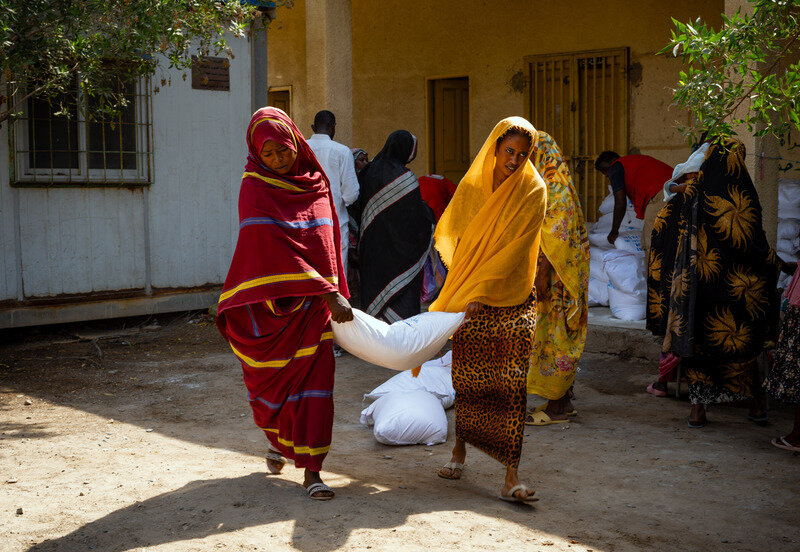Sudan hunger crisis: In the eastern city of Port Sudan, where tens of thousands of war-displaced seek shelter, frail infants with stick-thin arms chalk up dangerously high malnutrition levels. Hungry people pack schools and other makeshift housing centres, clinging to scant belongings from their old lives. Across Sudan, geographically Africa’s third largest country, echo innumerable stories of grief – as millions struggle to survive.
“I lost my home, I lost all my family,” says Fawziya Abdullah Adam, one hand shielding her eyes as she sits, describing how she fled her war-torn home north of Sudan’s capital, Khartoum. “We lost everything that was important.”
Over more than a year, the conflict in Sudan has killed thousands and uprooted more than 9 million people, shaping the world’s largest displacement crisis. Today, it is pushing this East African country to the brink of famine.
More than half the country’s population, or around 26 million people, now face acute food insecurity – 14 million more than before the conflict. Of that number, some 8.5 million are struggling at IPC4 – the ‘emergency’ level on the global tool for measuring hunger, the Integrated Food Security Phase Classification (a collaborative initiative involving more than 20 partners, including governments, UN agencies, and NGOs).
The latest report, published today (27 June), charts an alarming 755,000 experiencing catastrophic hunger at IPC5 – the most dire level of food insecurity.
“I’ve never witnessed a situation where the food security situation gradually moves to a catastrophic level every day,” says Eddie Rowe, World Food Programme (WFP) Country Director for Sudan. “Yet that is what is happening, especially in conflict-affected areas like the Darfur and Kordofan regions, Gezira State and southern Khartoum.”
Indeed, the hunger picture could sharply worsen as fighting rages and the rains set in – June is when ‘hunger season’ starts as vast communities lose access to roads and markets. Dwindling funds and limited humanitarian access leave humanitarian agencies such as WFP unable to reach them.
The consequence of this is “regular mass displacement” as people travel to hubs scattered across the country where they know they will be able to receive assistance.
“And that is very scary because while we are trying our level best to reach hard-to-reach locations, access – restricted by shifting lines of conflict – is preventing us from supporting people,” says Rowe.
“We are scaling up our emergency response to avert a full-blown famine and save lives before it’s too late,” he adds. “It’s a race against time. We need unfettered access. If we have access and funding, we will be able to avert an outright famine.”
Rowe takes heart from the impact of WFP’s work over the past year – the new IPC numbers would be far higher had WFP food assistance not arrived in the many places where it did. “Despite all the challenges, in the Darfur states, for example, we were able to reach more than a million people with over 7,500 metric tons of food,” says Rowe.


